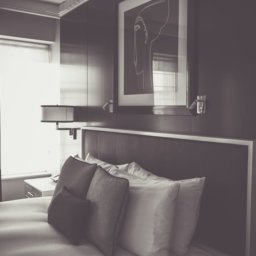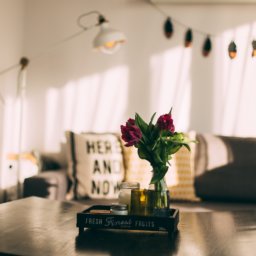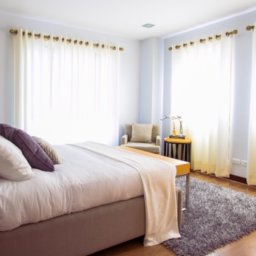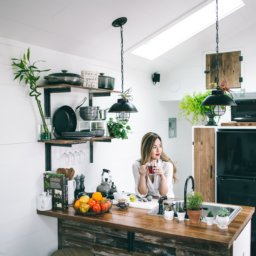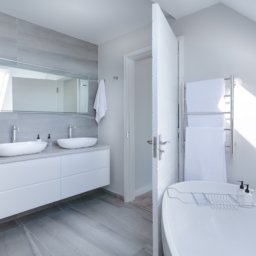If our homes are our safe places where we go to lick our wounds, recharge, and unwind, our bedrooms are sanctuaries inside those sanctuaries. We spend one-third of our lives sleeping, as we should. That is our way to rest, grow, and re-energize. But the room itself isn’t necessarily a safe haven. Much of the emotions we relate to the bedroom come from the design.
Interior design can have a significant impact on our mental health. How we arrange furniture, the color scheme we choose, and the style can affect our mood and energy. This is particularly important to know when designing a bedroom because of the thin line between a sleep-inducing ambiance and one that will keep you up all night.
So, if you are planning on switching things up in your bedroom, here are a few tips to make it calm and serene.
A soothing backdrop
When designing a room from the top, you’ll want to start with the color palette. This will set the tone for the rest of your design efforts.
Here, you can use the knowledge from color psychology, which tells you not to use highly saturated colors and “aggressive” shades, such as reds and oranges. Instead, opt for soothing tones such as cream, off-white, and light shades of brown. Color psychology experts would suggest using colors that evoke serenity, such as green, lavender, or light pink.
Of course, you can combine different colors or tones, depending on the style you choose. Incorporate other colors with bed linens, upholstery, and window treatment.
Less is more
When furnishing your bedroom, you should be aware that this is not some kind of storage unit for all the things that you have nowhere to put. The room needs to be equipped with the essentials, which can later be complemented with other pieces and accessories, but only if you assess they won’t overwhelm the room. The foundations for the bedroom are a centerpiece bed (with or without a headboard), a classic dresser, and nightstands. Once you have their positions sorted, think about adding a storage bench, a chic mirror, a chair or couch, etc.
When positioning the furniture, make sure you have enough room to comfortably get in and out of the bed. Place a nightstand right next to it and the dresser against an open wall. The bedroom needs to be a clutter-free zone, as clutter tends to make us anxious, which will disrupt sleep.
The bed is all
The bed is the most important piece in the room, not only because of its functionality but also because of its visual appeal. Bed frames come in a variety of designs and materials, and you can choose an option that best suits your needs. For example, upholstered beds can have lovely decorative details like nailhead trim and tufting, canopy beds work well in rooms with high ceilings, while storage beds are the most functional.
Once you have the design element sorted, consider the comfort. Of course, the two are co-dependent, as you will first need to decide on the bed size. The usual choices for the bedroom are king and queen-size mattresses, with the king-size being more comfortable for two sleepers and the queen-size more suitable for smaller rooms.
When choosing the type of mattress, search for the ones that provide pressure relief, contouring for the body, motion isolation (useful for couples), and durability. Choose a firmness level depending on your weight and the most common sleeping position. For example, extra soft mattresses are best for side sleepers under 130 pounds, while the extra firm is good for back and stomach sleepers over 230 pounds.
Let there be light, but not too much
Jarring light can create visual noise in the bedroom, just like highly saturated colors. Bright lights can even mess up your body clock and keep you awake during the night even after you turn them off. The best solution is to layer the lighting in a way that can support various functions while easing you to sleep in the evening.
The large ceiling fixture, for example, could serve as a visual element if you decide on a specific style, like a vintage crystal chandelier or sleek metallic pendant light, but it shouldn’t be the only thing you rely on. You can place several lamps around the room. Aside from the standard bedside lamp on the nightstand, you can also place a floor lamp in the reading nook. Lampshades are useful for casting a soft glow. Also, choose three-way bulbs that allow you to adjust the light level at any time.
Up the comfort
While a comfortable bed is the most important element of every bedroom, the rest of the room needs to look and feel cozy as well. For that, you can use various fabrics, textures, and accessories, starting with a soft place to land your feet in the morning. Of course, we are talking about area rugs. You can position a big one under the bed or use two smaller ones on each side.
A neat design trick is to layer two or three rugs to create a richness of textures. If you are not sure about the type of rugs that are suitable for layering, you can always start with jute as the bottom layer. It can serve as a blank canvas while bringing a lot of texture to a room. Get creative with the top rug. Opt for tribal, furry, or oriental pieces.
Continue building up the textured look with lush throw pillows, throw blankets on the bottom of the bed, and heavy drapery on the windows.
A personal touch
Finish up the room with just a few carefully selected accessories or some other design elements that would personalize the décor a bit more. This can be done with artwork that matches the room style, but also with flower vases, potted plants (the ones that are safe to keep in the bedroom), a reading nook with a small bookshelf, a vanity set, a few family photographs, etc.
Final thoughts
Designing a serene bedroom might be a complex project, but a very rewarding one indeed. It is essential for the quality of your sleep, which, again, is essential for your overall health.
Image source: https://unsplash.com/photos/nEtpvJjnPVo


